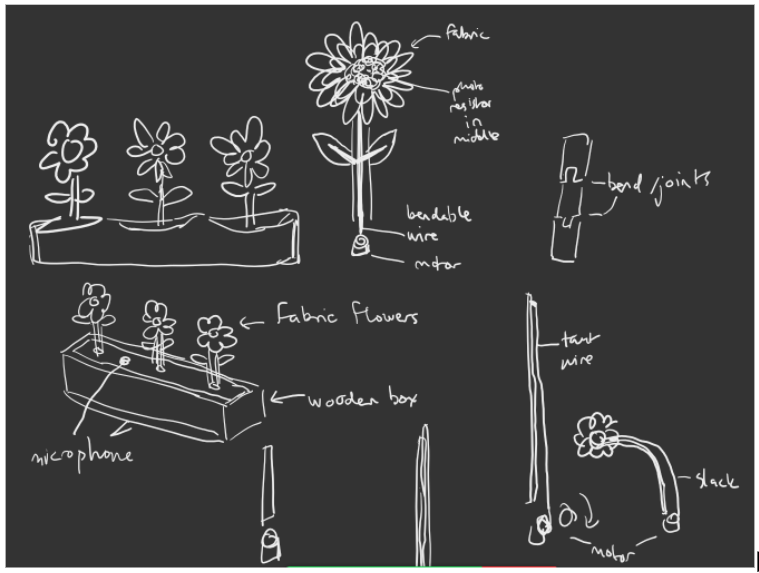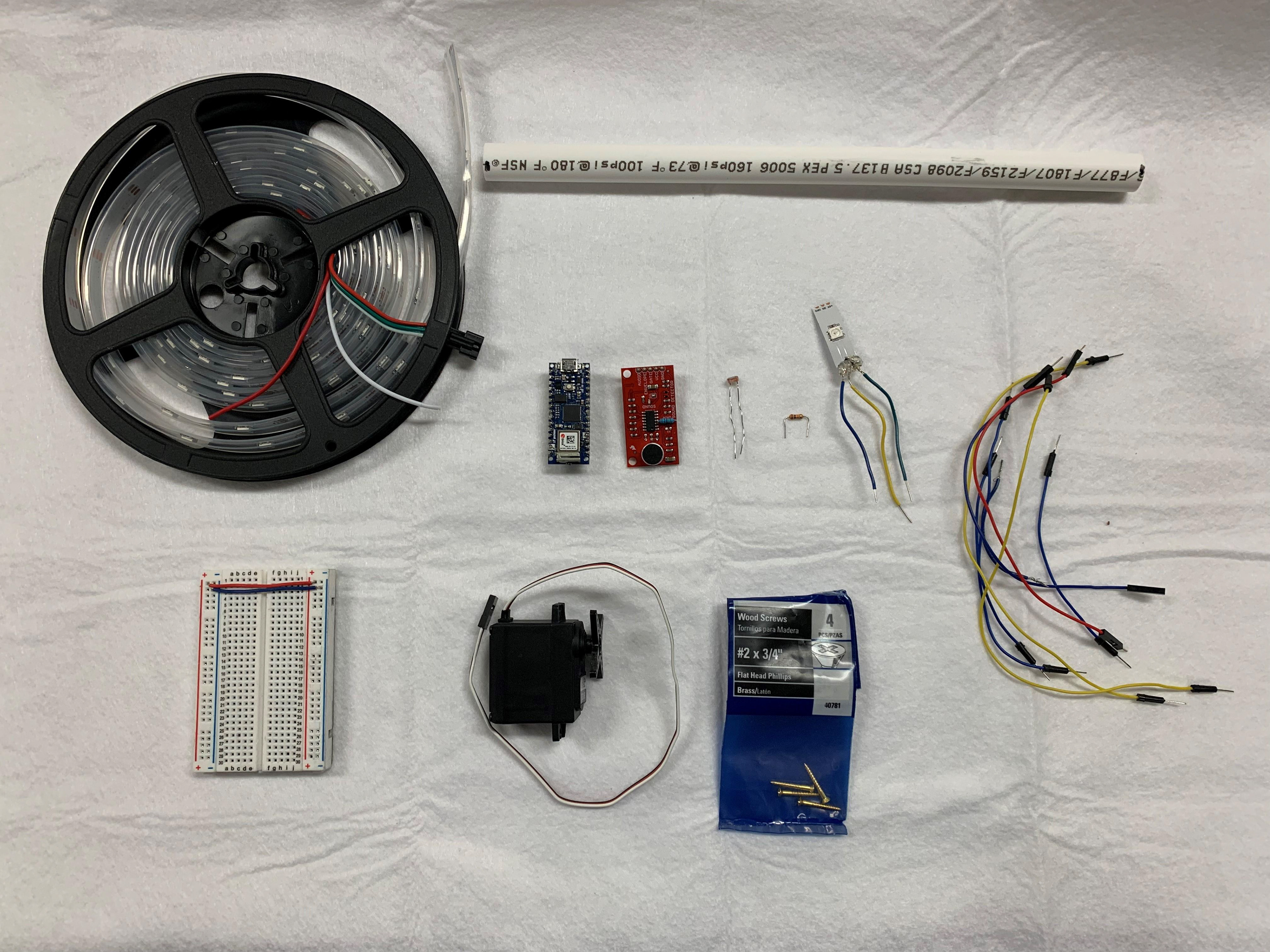date. 2021 August- 2021 December
city. Boulder, Colorado
team. Alexander Chan, Isabella MacDonald
Software used: Arduino




This project creates an interactive emotional experience requiring the user to think about how an artificial flower could react in similar ways that a real flower would, and how those translate into other responses not seen in nature. It also aims to provoke thought around the emulation of natural responses, and going beyond nature with the capabilities of technology. Using the common iconography of a generic flower, it allows users to make a connection between the natural world and the artificial world, and how closely the latter can emulate the former. In essence, the system is a sound and light detector, taking the inputs and parsing them through a microcontroller. That data can then be output in the form of colored LEDs and rotating motors, creating a mechanical type sculpture. The interactive flower installation combines electronics and other artificial materials with natural input from the environment, bridging the gap between reality and simulation.
The flower that takes two inputs, light and sound. These inputs then influence the orientation of the flower and the color of the petals. Cycling between green and red, colors commonly associated in design with good and bad respectively, symbolizes the change in volume of the environment that the flower is taking in. These types of outward expressions can't be seen in real flowers however, as they don't have the ability to immediately show that an environment isn't suitable for growth. But with this project, we aimed to show how external factors can influence immediate change in the flowers and their behavior. Loud noises can be created easily by drumming, tapping, or yelling, and light can be simulated through the flash on one's cell phone, giving an emulated natural response similar to what would happen slowly over time for a living flower.
The purpose then is to spark that conversation between user and system, of what nature is and what constitutes a natural response. All things can be simulated with data, sensors, and outputs, but what distinguishes these from what occurs throughout the earth without influence? If we can simply emulate these interactions in a lab, what makes it so special to want to continue to seek those same things out in nature? These questions, and more, can be considered when interacting with this project, and it is our hope that people will think deeply about the relationship we have with the world around us, as well as the digital world we so heavily rely on and make use of in our daily lives.